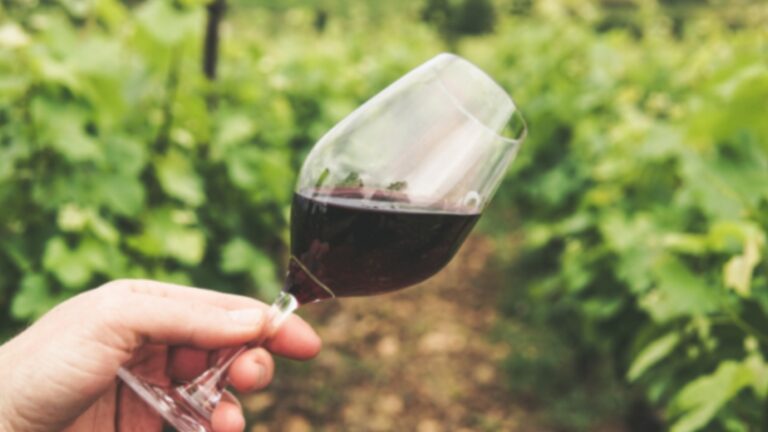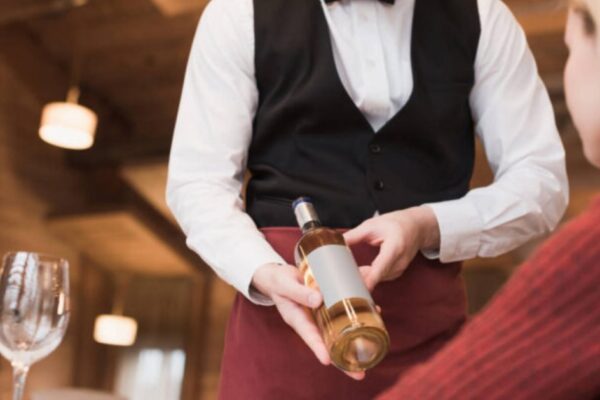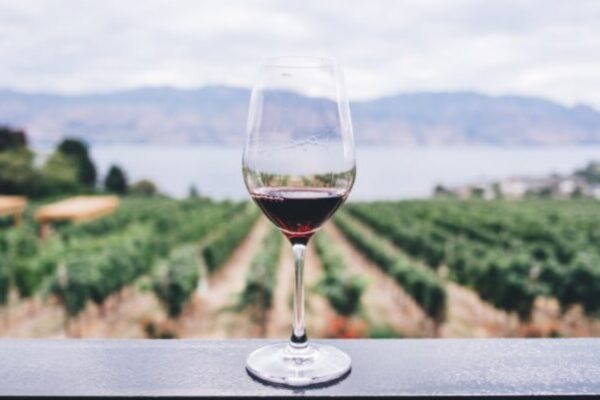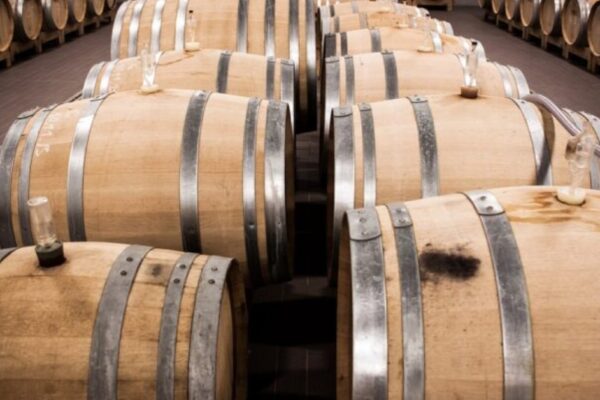Wine tasting is a gateway to a fascinating world of art and science infused in a bottle, waiting for you to discover and indulge in a feast for the senses. With all the grape varieties that exist, which in turn are picked from various regions and processed by tens of thousands of wineries, it’s a sure bet that exploring wine will never get boring!
Personally, I was never fond of wine as it did not align much with my taste buds. However, in my late twenties, my taste buds somehow changed and I started to appreciate wine more as an experience, rather than regarding it simply as another alcoholic beverage. It’s always a mystery how a wine bottle will contribute to a culinary experience. In fact this is what intrigued me into learning more about wine.
Throughout the recent years, I have also crossed paths with people who have a passion for wine. In fact, thanks to various engaging discussions they managed to transmit their passion to me. This is when I started to really perceive wine in a different way and at an all-new elevated level. I started understanding why certain foods pair better with a particular type of wine, and that the correct pairing can truly turn gastronomic experiences more exquisite.
Wine Tasting Principles
Learning and expanding knowledge on wine starts with knowing how to taste wine. You may be seeking to learn wine out of sheer curiosity, or for making informed choices when buying wine, or simply for choosing the perfect wine to accompany a meal. Irrespective of your motif, the first step in tasting wine and mastering this skill, is to understand the basics of wine language.
Once you gain a basic knowledge of wine, you automatically educate your palate and senses on what to look out for when tasting wine. It means that you will appreciate your next wine from a different and more enriched perspective. In this way, you will be able to perceive its quality level, its aging potential, and where it is in its life. You’ll also come to learn that for a wine to be of good quality it doesn’t necessarily mean it has to be always pricy.
Here we explore the basic keywords that you need to know and grasp if you want to take your gustation of wine to a whole new level.
Wine Basics
Many swirl a wine glass before tasting a wine, only when a waiter or sommelier is waiting to serve the wine. It is a custom that many follow without really understanding the value and gist of why they do it. Here you find what you need to do and focus on when tasting your next wine. In this way, you will be able to enrich your next wine tasting experience, whether you’re at a restaurant or at home.
1. Sight
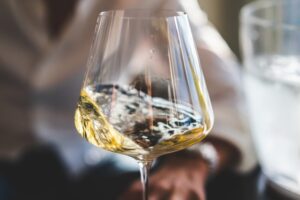
Wine tasting begins with a brief visual examination of the wine. You need to observe the colour, opacity, and viscosity (often called “legs”) of the wine as this gives you an insight into the grape variety and the age of the wine.
A grape variety is simply a type of grape. Just like apples can be “Gala”, “Granny Smith”, or “Ginger Gold”, grapes can be “Cabernet”, “Chardonnay” or “Syrah”. The amount of colour that is extracted from the grapes’ skin determines how intense is the colour of a wine. Climate is a key determinant here as it affects the thickness of the grapes’ skin, and hence the colour of the wine.
Grapes grown in a cool climate tend to be thin-skinned, such as Oregon Pinot Noir. On the other hand, grapes grown in warmer climates tend to have thicker skins, like a bold Sonoma Cabernet Sauvignon. In the case of rose wines, the colour comes from minimal contact with the grapes’ skin. When it comes to white wines, aging increases pigment and turns the wine more yellow. On the contrary, aging red wines lose colour, and turn more brownish.
When you swirl the glass you can observe the viscosity of the wine. This is done by observing the “legs” that the wine leaves behind when it drips down the sides of the glass. Viscosity gives hints of the alcohol content and is most notable in a fortified wine or in a high alcohol wine, like an Old Vine Zinfandel. The slower the wine flows down the side of the glass, the higher the alcohol content. In this case, the wine is described to be more viscous.
2. Smell
“Nose” of a wine refers to the smell or aroma of a wine. A wine can contain various aromatic compounds (stereoisomers), namely the following three:
- Aromas that are indigenous to the grape variety the growing region (primary aromas);
- The winemaking process (secondary aromas), and
- The wine’s storage conditions (tertiary aromas).
The key in getting the most out of a wine’s aroma is to give the glass a swirl for a good 10 seconds. This will allow the alcohol content to evaporate into the air (volatilize) and lift the lighter-than-air aroma compounds out of the wine and into your nose. Once you’re ready with the swirling, sniff well into the glass and see what aromas you can identify from the below.
Primary aromas
Primary aromas are the aromas indigenous to the fruit itself and may be either fruity or floral in nature.
a. Fruity
Can be anything from apples, peaches, to black fruit. Next time you try a wine, close your eyes and see what fruit comes to your mind. Fruit flavours in red wines are typically red fruit and black fruit flavours, or a blend of the two. For example, Pinot Noir generally exhibits red fruit flavours. However, these can vary from cranberry-like flavours to black cherry or raspberry-like flavours. Generally, wines with more “black fruit” flavours tend to be more full-bodied, including wines like Cabernet Sauvignon and Syrah.
White wines usually have aromas of tree fruits (like peaches) and citrus fruits (like lemons). However, when you get more into wine tasting, you’ll note that the same grape varietal in one growing region is very different from another growing region due to factors like terroir and vintage. For instance, a Chenin Blanc from Western Cape, South Africa (Arendsig, Inspirational Batch 3 Chenin Blanc 2018) has lemon, peach, and pear aromas, whilst a Chenin Blanc from Chinon in Loire Valley, France (Couly-Dutheil, Les Chanteaux Chinon 2018) has more peach, apricot, pear and apple aromas.
b. Floral
These can be anything from roses to violets and chamomile.
Secondary aromas
Wine’s secondary aromas are created by the fermentation process. Here the winemaker’s choices shape the wine’s secondary aromas that are created during the fermentation process. The most common secondary aroma is oak. Other secondary aromas include nutty, buttery, vanilla, and cedar. A woody aroma is what gives a wine its profile. Red wines typically have a cedar aroma, whilst an oak aroma is typical to Chardonnay (for example Endrizzi, Masetto Doré Chardonnay 2017 from Trentino, Italy).
Tertiary aromas
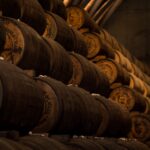
Tertiary aromas may come in when a wine undergoes an aging process. When wines age in oak barrels, woody flavours impart onto the wine. The wine is then said to being “oaked”.
A young wine may present itself fruity to the nose, but when it undergoes an ageing process, it will develop aromas like chocolate, coffee, caramel, and toffee. Other tertiary aromas include butter, or toast, and even earthy nuances like mushrooms, or veggie-like components. A leather aroma is typical of good wines that age with a number of years.
The more different aromas a wine has, the more complex is the wine. In turn, the higher the complexity of a wine, the more exquisite it is. A poor quality wine normally has two to three dominant aromas, whilst a good quality wine will have between 5 to 10 aromas. Notable world-class wines can have as many as 20 different aromas!
Tip: When you smell a wine, your taste senses get hints of what the flavour might be like. Therefore, always keep the scents that you attach to wine in your mind and see how these merge with the flavour profile on the palate when you move on to tasting the wine.
Be wary that if it ever happens that the smell you get is an unpleasant smell of wet, mouldy-newspaper flavor, then the wine is “corked”. This is a fault that can be found in some wine bottles (3-4%). This smell comes about not by the small bits of cork that may fall into the wine, but by the presence of a chemical compound called TCA (2,4,6 – trichloroanisole). If you come across a corked wine, then this is a good reason to ask for a substitution of the wine bottle with a new one. Again when it comes to the nose of a wine, everyone has different interpretations and prioritisations of aromatic compounds. These, together with the environment impact the evaluation of a wine.
3. Taste
When it comes wine tasting, you need to focus on four main characteristics:
- Sweetness
- Acidity
- Tannins
- Body of wine
When you sip wine, swish the wine around your mouth so that the taste receptors at different parts of the tongue can fully detect different flavours and characteristics. Your sense of taste is triggered by the sensory information gathered from compounds in the oral cavity and oropharynx that activate taste receptor cells found on your taste buds. Depending on the chemical nature of the tastant, you perceive stimuli of sweetness, bitterness, saltiness, sourness, or savouriness umami1.
Chemically induced sensations can also alter the way you perceive the taste of a wine. Triggers include:
- Temperature (physical stimulus), and
- Specific substances contained in some foods, like hotness, pungency, and coolness.
The serving temperature of the wine is also a major factor that affects your wine tasting experience. Read more on wine temperature and how it affects wine quality and tasting here.
1. Sweetness
Sweetness is detected by the tip of your tongue. So if a wine has minimal residual sugar, then it is dry. Residual sugars are the naturally occurring sugars (fructose) in grapes that the yeast does not convert into alcohol during fermentation. It’s measured in grams per litre, with 1% of sweetness being equivalent to 10 grams per litre of residual sugar. Generally speaking, the more alcohol a wine has, the lower the residual sugar content. A dry wine does have some residual sugar in it, however, many don’t detect sweetness levels under 1.5%.
If you choose wine by the level of sweetness, then it may be best to look at the Alcohol By Volume (ABV). Wines with an ABV of less than 12.5% are likely to be sweet. For instance, Asti Spumante, Moscato, Riesling, and Rose wines usually have an ABV under 10%.
Tip: When rating a wine, keep in mind that a high alcohol content in wine might mislead you in perceiving a sweeter taste than what the wine actually is!
2. Acidity
The sides of your tongue detect acidity and produce that mouth-watering sensation. Acidity is the flavour you get from substances that contain acids like lemon juice, and vinegar. Although at varying levels, all wines have some level of acidity. In turn, acidity defines the crispiness of the wine. Wine is “flabby” if it has a very low acidity level, or is fresh, vibrant or zingy if it has high acidity levels.
A wine’s acidity can also give hints about the grape varietal, climate, and aging potential. Cooler regions produce grapes with higher acidity and lower sugar content, and warmer climates result in grapes with lower acidity and higher sugar content.
3. Tannins
Tannin is a “sharp” bitter and astringent taste that immediately gives a dry sensation in the mouth. It is generally produced by the tannins in the bark, leaves, and outer rinds of fruits and trees. Tannin is vital in red wines, as it structures the wine and helps the wine to age well. This is achieved mainly by its anti-oxidant characteristics. Ageing makes the tannins in wine become more integrated and softer.
Grape tannins are found in the skins, seeds, and stems of the grape and tend to dry out the front part of your mouth and teeth. Oak tannins are softer and smoother and are typically sensed more on the tongue.
4. Body of Wine
The wine’s alcohol content also shapes the body of wine and how it feels in your mouth. Here come into play the terms “light”, “medium” or “full-bodied”. Wine with a higher alcohol content will drip slowly at the sides of the glass and so is more viscous and feels “heavier.”
Changes in Wine Tasting Experiences
A wine tasting experience today may not necessarily be the same as another one sometime in the future. Over time it is possible to experience alterations in taste buds. For instance, viral upper respiratory infections including influenza, as well as the recent Coronavirus disease 2019 (COVID-19), caused by Severe Acute Respiratory Syndrome Coronavirus strain 2 (SARS-CoV-2), and the previous endemic and pandemic coronaviruses, like the Middle East Respiratory Syndrome Coronavirus (MERS-CoV) and SARS-CoV2, have led to many experiencing disturbances or loss of smell, taste, and chemesthesis.
Other factors that can alter taste include genetic and environmental factors, aging, chemical exposures, drugs, high alcohol consumption, cigarette smoking, poor oral health and, malnutrition.
Cheers To Your Next Wine Tasting!

After this well-versed introduction to the world of wine, what remains is the clinking of glasses and the start of your journey in understanding wine from a more complex perspective. Cheers to enriched wine-savouring experiences!
Sources
1 Melis M, Tomassini Barbarossa I. Taste Perception of Sweet, Sour, Salty, Bitter, and Umami and Changes Due to l-Arginine Supplementation, as a Function of Genetic Ability to Taste 6-n-Propylthiouracil. Nutrients. 2017;9(6):541. Published 2017 May 25. doi:10.3390/nu9060541
2 Risso D, Drayna D, Morini G. Alteration, Reduction and Taste Loss: Main Causes and Potential Implications on Dietary Habits. Nutrients. 2020 Oct 27;12(11):3284. doi: 10.3390/nu12113284. PMID: 33120898; PMCID: PMC7693910.

